Combining sculpture and a collection of rare palms, the Ann Norton Sculpture Garden offers a quiet retreat from the up-scale social whirl of Palm Beach, Florida. Palm Beach, after all, was (and in some cases still is) home or vacation playground for many of the world’s rich and famous, from the Kennedy and Pulitzer families, to Donald Trump, Bernie Madoff and Conrad Black.
Ann Norton was a sculptor who married one of these wealthy men, Ralph Norton, an industrialist and an art collector whose collection became the foundation of Palm Beach’s Norton Gallery. She also was a woman who loved plants and birds. The garden that surrounds the house that she and her husband shared contains a wide variety of tropical plants, including an impressive collection of palm trees, and provides habitat for birds and other wild creatures.
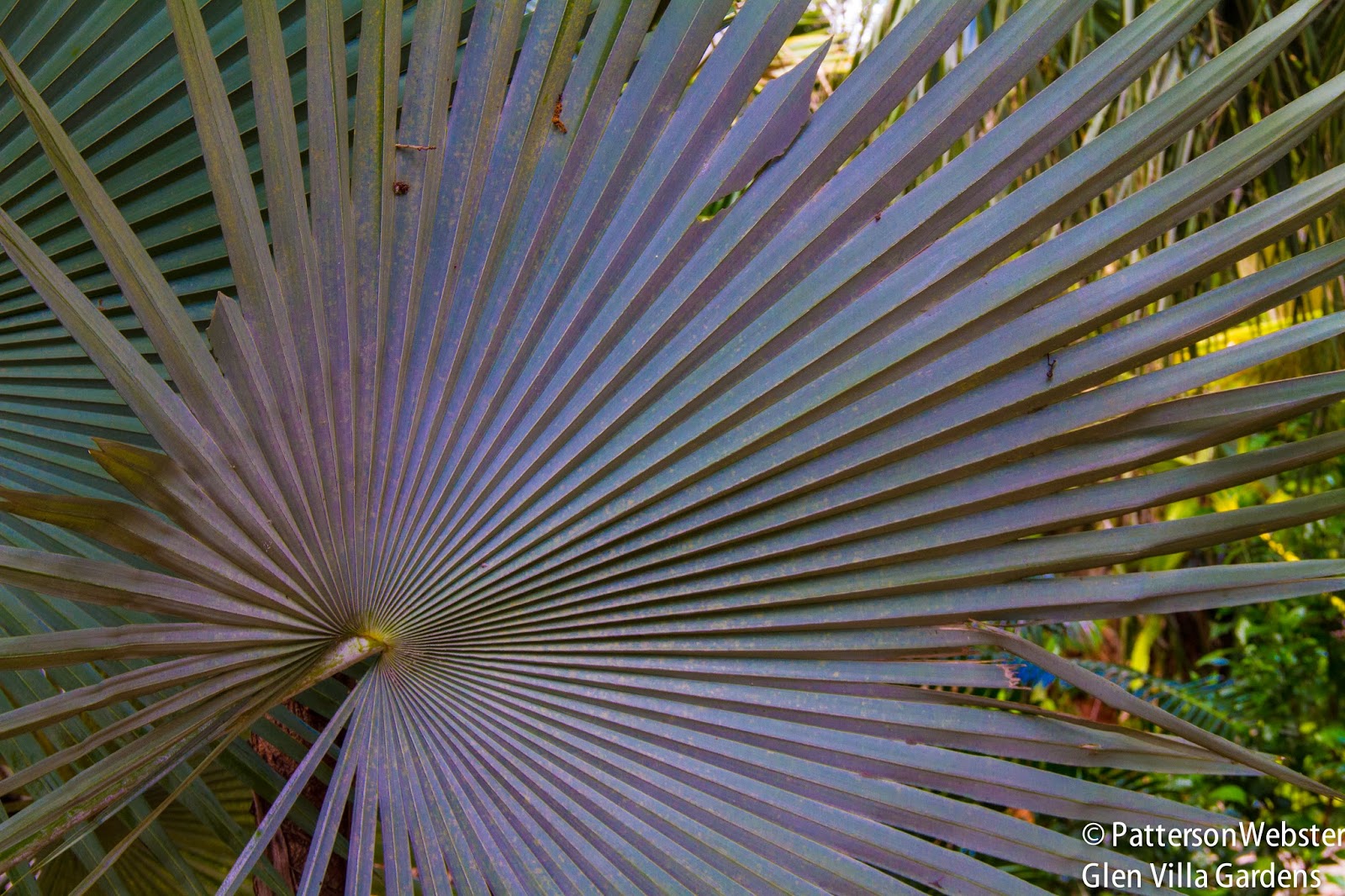 |
| The blue tones of a Bismarck palm appear iridescent in the shade. |
Her sculptures are placed throughout the 1.7 acre garden. One of the largest sits in a reflecting pool beside the house. A monumental work made of brick, from one angle it suggest the prow of a boat, from another angle, the top of a mountain range.
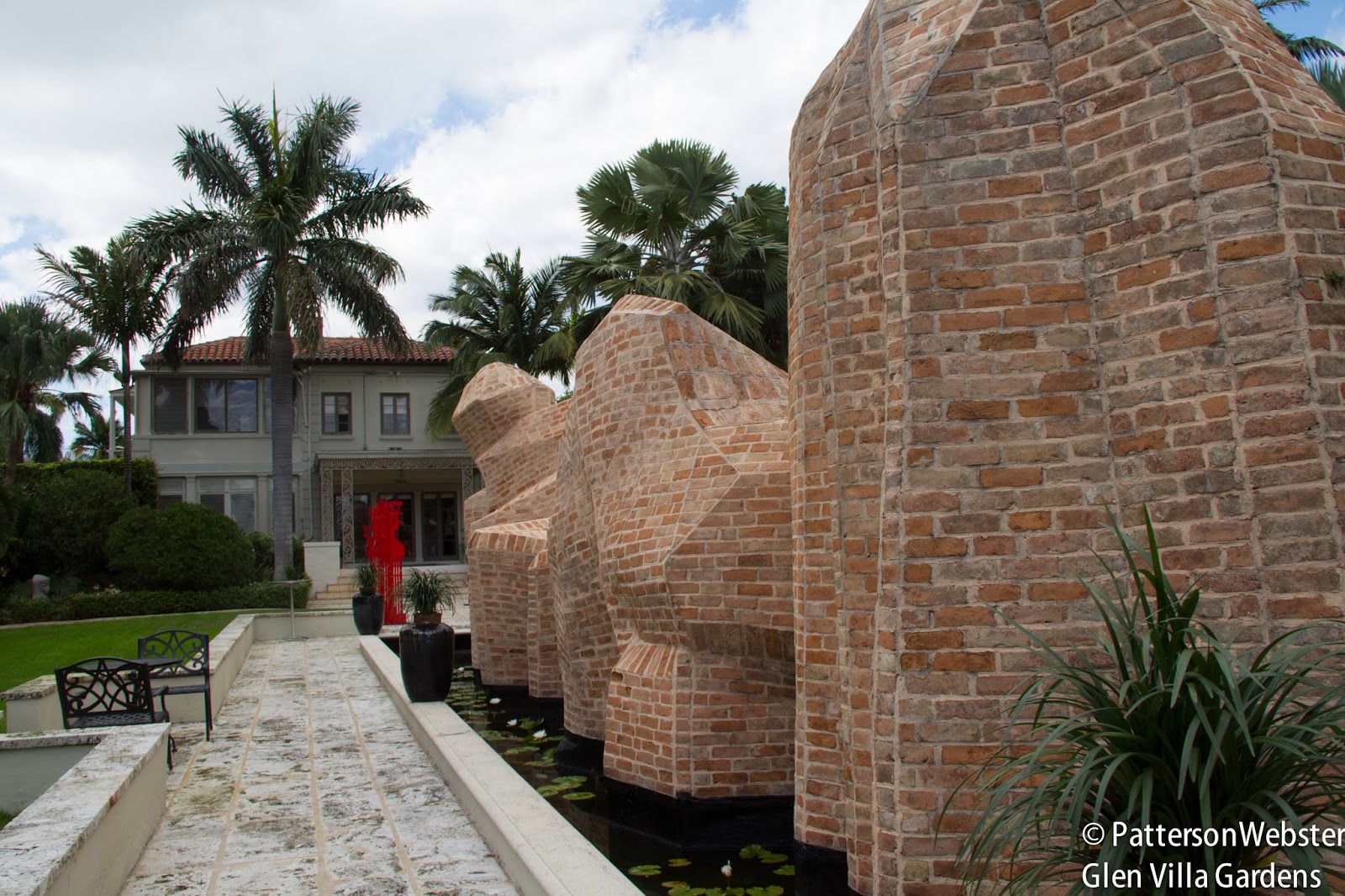 |
| Norton made the bricks for this and other sculptures on site, shaping them to her needs. |
Mrs. Norton’s sculptures are very much of a time and place. Some reflect the art deco heritage of southern Florida.
 |
| She made this group of figures as a tribute to her husband Ralph. |
Others show a debt to Alexander Archipenko — she was once his studio assistant. But the strangest are those that reflect her own views.
Large brick chimney-like pieces rise up from the tropical foliage like remnants of temples in the jungles of Cambodia. Partially hidden by the tropical vegetation, they are slightly mysterious, slightly sinister, and for me rather unappealing.
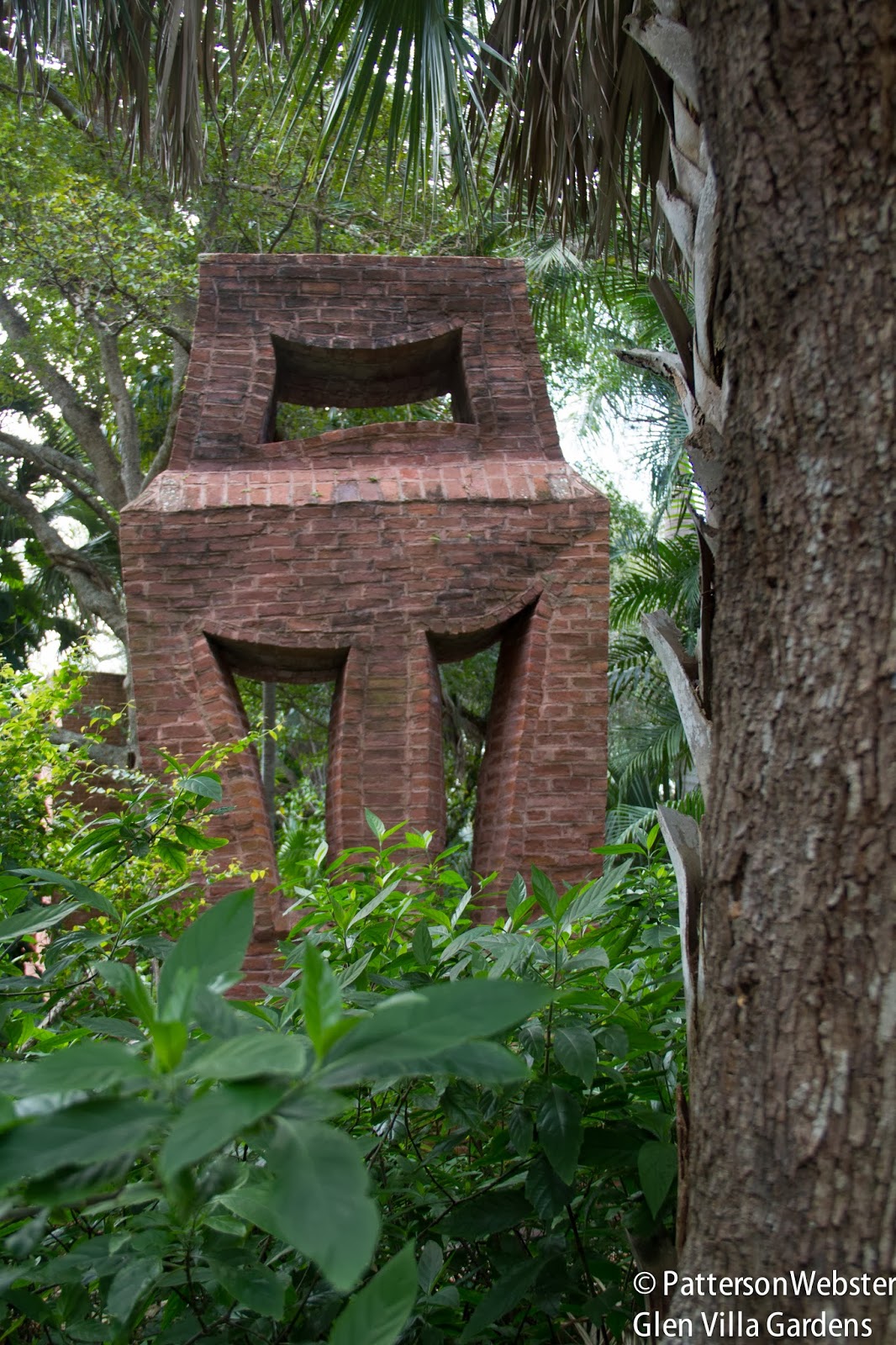 |
| One of the sculptures Mrs Norton called ‘Beings’ peeps through the greenery. |
The garden fulfills its primary purpose, as defined by Ann Norton and her long time friend Sir Peter Smithers, who was himself a horticulturalist of renown: “to provide an appropriate background for Ann Norton’s sculptures for viewing by the public. The plantings, mainly beautiful green foliage, should display the sculpture to their best advantage and not compete with them for attention.”
 |
| This upright ‘Being’ stands beside a small pool with curving edges. Do the contrasting lines compete for attention? |
Which brings up a more general question, about the relationship between art and gardens. At the Norton garden, art is meant to dominate the space — or at least to be the focus. The name of this place, the Ann Norton Sculpture Garden, makes this clear. In many smaller and less ambitious gardens, art often serves as decoration, providing a focal point for a view or simply filling an empty space. More desirable, and much more difficult to achieve, is when the two elements are balanced, and each enhances the other. When this happens, the result can be magic, allowing us to appreciate things we may otherwise overlook.
Sculpture at the Norton garden is meant to play the leading role, but the plants in the garden are an outstanding supporting cast. Over 300 species of rare palms and native plants offer a quiet background to the brick works that appear at irregular intervals along meandering paths. The variety of plants is striking, but even more striking is how harmoniously the different shapes, colours and sizes work to support one another.
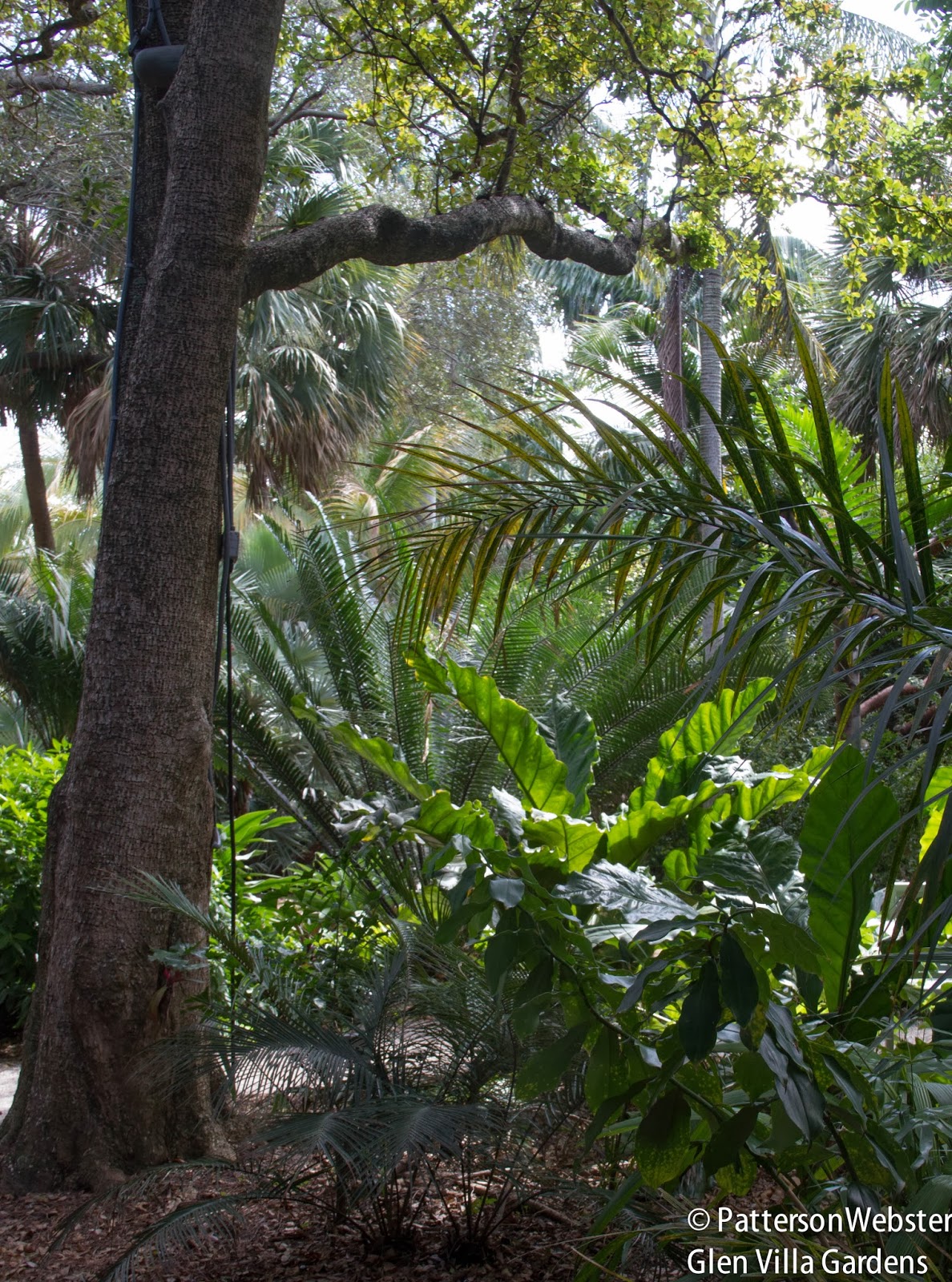 |
| A typical view along one of the meandering paths. |
Less harmonious are some of Norton’s earlier sculptures that dot the grounds. As charming as this little boy may be, he and the stone arch are jarring, out of keeping with the rest of the garden.
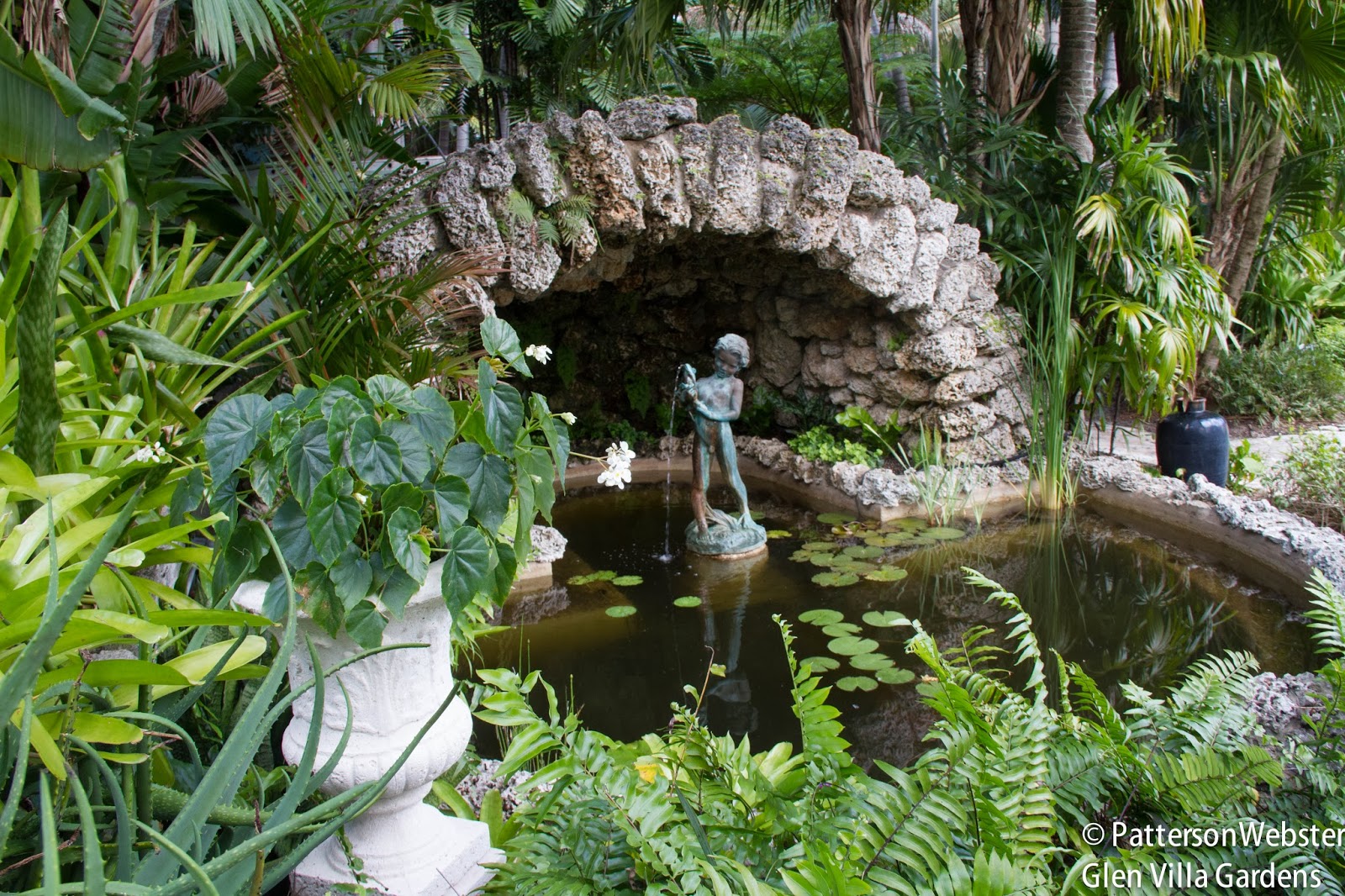 |
| This stone-edged pool is near the house. |
Mrs Norton’s will specified that the house and garden should provide a venue for ‘deserving’ artists to exhibit and sell their works. The sculptures now on view include a procession of Red ‘Frolics’, by Edwina Sandys. While not at all harmonious, these painted aluminum pieces emit a jolt of colour that could be jarring in the otherwise genteel context. And they do jar, but in a good way, somehow comfortable in the tropical setting.
 |
| This Red Frolic is called Fishwife. |
Also adding a punch of colour was this plant blooming near the house. I have no idea what it is, I only wish I could grow it in my garden.
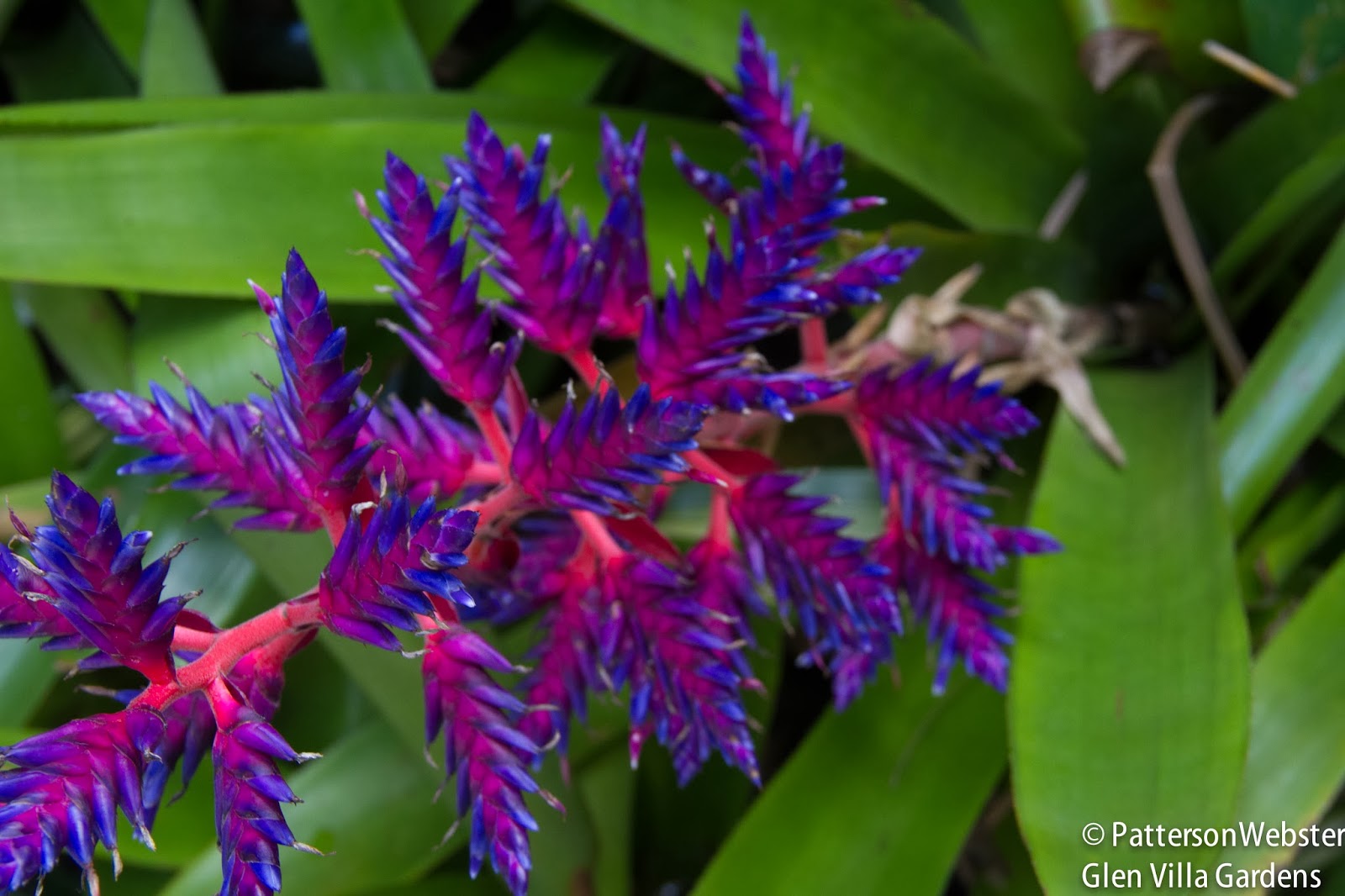 |
| Who knows the name of this plant? Please let me know. |
The Ann Norton Sculpture Garden is now operated by a private foundation. Services include exhibitions, guided tours of the gardens and Norton’s sculpture studio, guest lectures and educational programs. If you are in West Palm Beach and environs, it is worth a visit.






